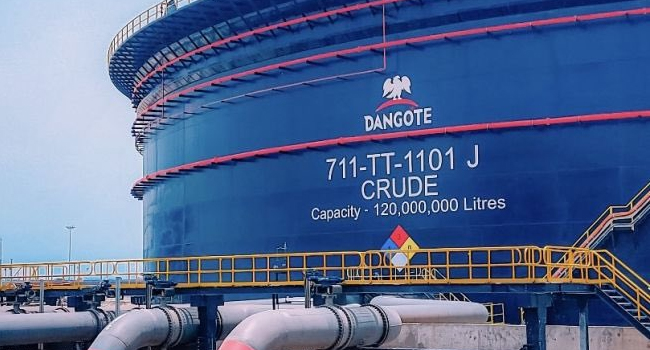Dangote Refinery has attributed recent reductions in crude oil inflows to a strategic response to elevated global prices, rather than operational failures. The company made this clarification during a media tour on Friday, aimed at addressing concerns over crude volumes and potential outages at the facility.
According to Vice President of Dangote Industries, Edwin Devakumar, the refinery adjusts its crude purchases based on price fluctuations and inventory levels. The 650,000-barrel-per-day refinery has undergone several rounds of maintenance this year, leading to reduced crude demand. Devakumar noted that no factory operates at 100% capacity every day without issues, and what matters is whether any problem affects final production.
The refinery, which commenced operations earlier this year, is designed for turnaround maintenance every five years, unlike older facilities that require more frequent shutdowns. However, Reuters has reported four separate shutdowns of the refinery’s gasoline unit this year for maintenance, an unusual frequency for a plant of its age.
Devakumar also addressed recent staff dismissals, revealing that the company had documented 22 sabotage attempts, including efforts to start fires and tamper with equipment. He attributed the prevention of damage to the refinery’s fire protection and automated control systems. Sabotage is rare among local refineries, according to the Crude Oil Refinery Owners Association of Nigeria, a trade group representing domestic refiners.
Nigeria’s state-owned refineries have remained mothballed due to years of corruption and neglect, making Dangote Refinery a crucial player in the country’s oil refining sector. The company’s clarification on crude oil inflows and maintenance shutdowns aims to alleviate concerns over the refinery’s operations and potential impact on the petroleum market. As the global oil market continues to experience price volatility, Dangote Refinery’s strategic adjustments to crude purchases and maintenance schedules will be closely monitored by industry stakeholders.
